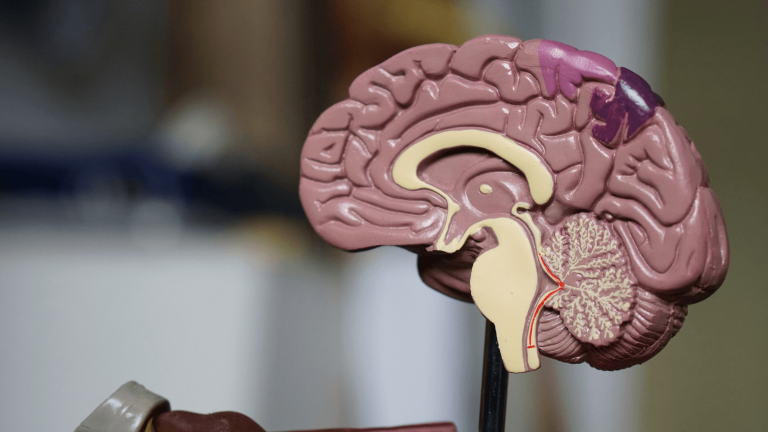The Arterial Circle of Willis and How to Interpret its Imaging Effectively
The Circle of Willis is an important anatomical structure in our brain that helps with blood flow. Continue reading to learn more about this structure and how to interpret its scans.

The Circle of Willis is a key anatomical structure located at the base of the brain, formed by a network of blood vessels. Understanding this circulatory system is vital for both diagnosing and treating neurological conditions.
Understanding the Arterial Circle of Willis
The Circle of Willis is a critical junction in the cerebral circulation, connecting different major cerebral arteries. Its unique design allows for collateral blood flow, which can be lifesaving in the event of blockages or ruptures within the arterial system.
Anatomy of the Circle of Willis
The anatomy of the Circle of Willis consists of several components, including the internal carotid arteries, anterior cerebral arteries, anterior communicating artery, posterior cerebral arteries, and posterior communicating arteries. This configuration ensures that blood can flow between the left and right cerebral hemispheres and provides blood supply to the brainstem and the cerebellum.
Considering its relatively small size, the Circle of Willis performs a major role in regulating blood flow to various brain regions, underscoring its clinical significance. In cases where one artery becomes occluded, the Circle facilitates the rerouting of blood flow, preventing ischemic damage to the brain tissue.
Interestingly, the anatomical variations of the Circle of Willis can significantly impact its functionality. Some individuals may have a complete Circle, while others may have hypoplastic or absent segments, which can alter the efficacy of collateral circulation. These variations can be crucial in predicting the outcomes of cerebrovascular diseases and understanding individual risks for stroke. Also, advanced imaging techniques, such as magnetic resonance angiography (MRA), allow for detailed visualization of the Circle of Willis, enabling practitioners to tailor interventions based on the specific anatomical configuration of a patient.
Circle of Willis Labeled (Normal Anatomy)
Function and Importance of the Circle of Willis
The primary function of the Circle of Willis is to maintain an adequate supply of oxygen and nutrients to brain tissue. The brain relies on precise blood flow; disruptions can lead to conditions such as strokes or transient ischemic attacks (TIAs).
In addition to its physiological role, an intact Circle of Willis is critical for numerous surgical interventions and procedures in neurology. Knowledge of this structure helps in planning surgeries and understanding the ramifications of vascular diseases. The Circle of Willis is often a focal point in research studies aimed at understanding cerebrovascular health, as its integrity can reflect overall brain health and resilience against neurovascular disorders.
Imaging Techniques for the Circle of Willis
Modern imaging techniques have revolutionized our understanding of the Circle of Willis. These methods allow for non-invasive visualization of the cerebral vasculature, paving the way for accurate diagnoses and effective treatment plans.
Computed Tomography (CT) Scans
CT scans provide a rapid method to visualize the Circle of Willis, particularly in emergency settings. Utilizing contrast material can enhance the visibility of blood vessels, making it easier to assess for any abnormalities, such as blockages or aneurysms.
This technique is invaluable in trauma cases or acute neurological events where prompt decision-making is crucial. However, over-reliance on CT imaging can sometimes lead to missed details, emphasizing the need for a complementary approach using advanced modalities. Additionally, the speed of CT scans allows for quick triage in emergency departments, where time is often of the essence. The ability to rapidly identify life-threatening conditions such as subarachnoid hemorrhage or ischemic strokes can significantly impact patient outcomes, making CT an important part of acute neurological care.
Magnetic Resonance Imaging (MRI) Circle of Willis
MRI is another powerful tool used to visualize the Circle of Willis and its associated structures. It provides a more detailed view of soft tissues and can identify changes that CT scans might overlook.
Specifically, MR angiography (MRA) allows for fine imaging of vascular structures without the need for extensive radiation exposure. This technique helps significantly in evaluating the integrity and flow characteristics of the arteries in the Circle of Willis. The high-resolution images obtained through MRI can also facilitate pre-surgical planning, helping neurosurgeons to visualize the vascular anatomy in relation to brain tumors or other lesions, thus enhancing surgical safety and efficacy.
Interpreting Circle of Willis Imaging
Interpreting images of the Circle of Willis requires a comprehensive understanding of normal anatomy as well as variations that may present clinically. A careful analysis helps radiologists and neurologists determine the presence of pathologies.
Identifying Normal and Abnormal Features
Normal imaging of the Circle of Willis should demonstrate well-defined, symmetric vascular structures. Any asymmetry, irregularity, or unexpected presence of additional vessels can indicate the potential for underlying pathology, demanding further investigation.
Aneurysms, for example, may appear as balloon-like dilations on imaging studies. Recognizing their typical features can lead to timely intervention, significantly affecting patient outcomes.
The Role of the Circle of Willis in Neurological Health
The Circle of Willis is integral to maintaining cerebral blood flow, serving various vital functions that contribute to long-term neurological health. Disruptions in its function can lead to severe consequences for brain integrity and functionality.
Maintaining Cerebral Blood Flow
By ensuring that blood constantly flows to all brain regions, the Circle of Willis helps maintain homeostasis and prevent disorders related to inadequate blood supply. This functionality is particularly crucial during moments of increased demand, such as during physical exertion or stress.
Studies have shown that individuals with a well-functioning Circle of Willis may experience fewer neurological deficits related to cerebral ischemia compared to those with anatomical variations or blockages.
Implications for Neurological Disorders
Research has increasingly focused on the Circle of Willis as a factor in various neurological disorders. Conditions such as dementia, Alzheimer’s disease, and chronic migraines have been linked to dysfunctional vascular structures, underlining the importance of vigilant monitoring of vascular health.
Understanding the interplay between the Circle of Willis and neurological diseases can enhance preventive strategies, suggesting that optimizing vascular health is important for improving overall neurological outcomes.


